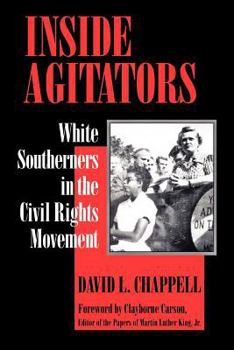Inside Agitators: White Southerners in the Civil Rights Movement
Select Format
Select Condition 
Book Overview
Winner of the Outstanding Book on the Subject of Human Rights in North America Award from the Gustavus Myers Center
In the movement, we always said that, like in a washing machine, it was the agitator that got the dirt out. David Chappell's book shows how the inside agitators helped cleanse the society of an extreme injustice. It is an enlightening and important look at a less publicized part of this history. -Andrew Young
A superb study done with subtlety and keen insight, it is absolutely essential for understanding the vital role white Southerners played in the civil rights movement. -C. Vann Woodward, Yale University
Chappell's argument is insightful and worth serious attention. It makes particularly fascinating reading from the perspective of the 1990s. -David R. Colburn, Reviews in American History
In this engaging work on Southern whites who sympathized with the Civil Rights Movement, Chappell argues that moderate whites, though lacking a moral commitment to civil rights, played a key role in the movement's success at both the local and national levels. -Virginia Quarterly Review






